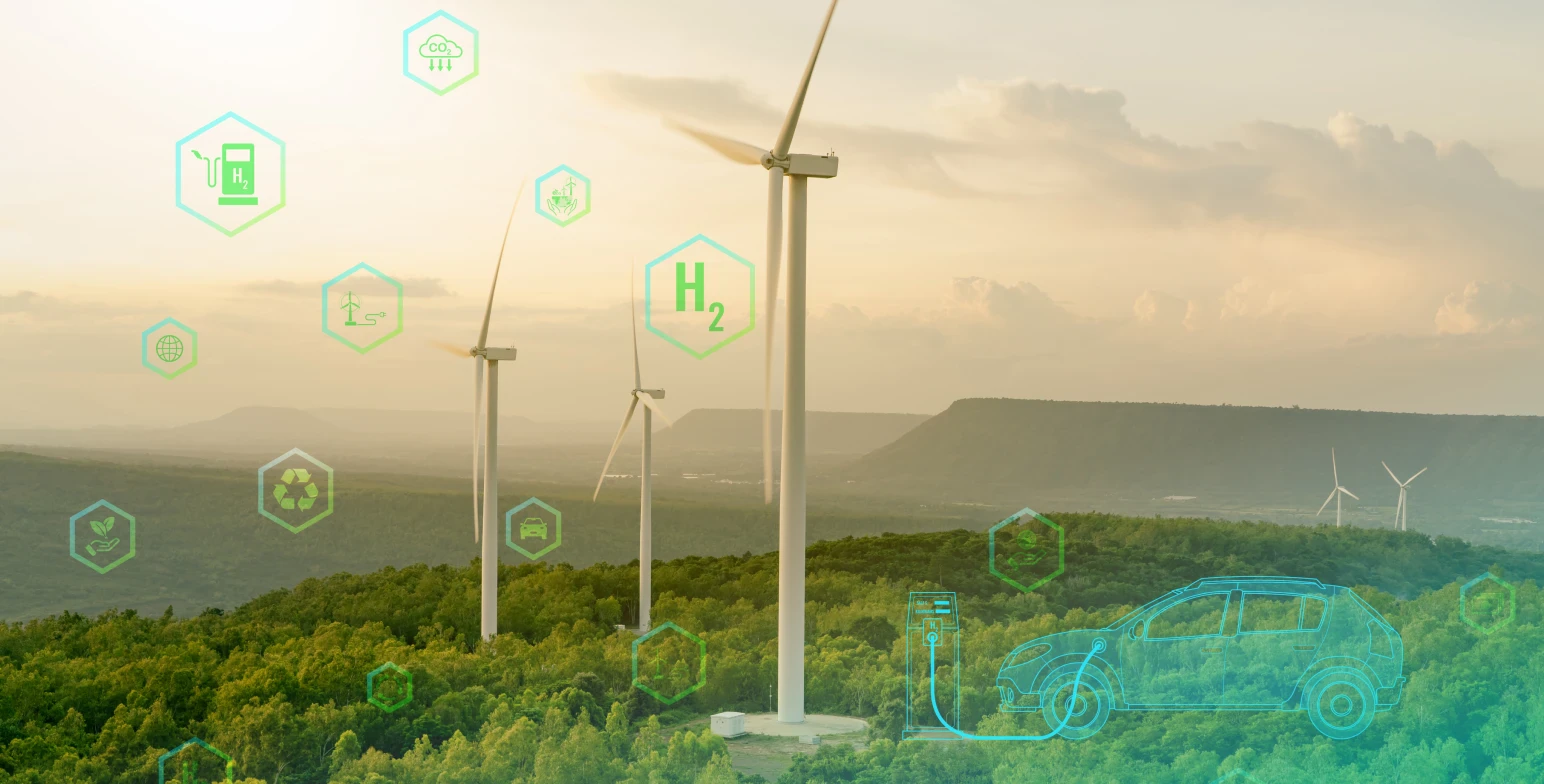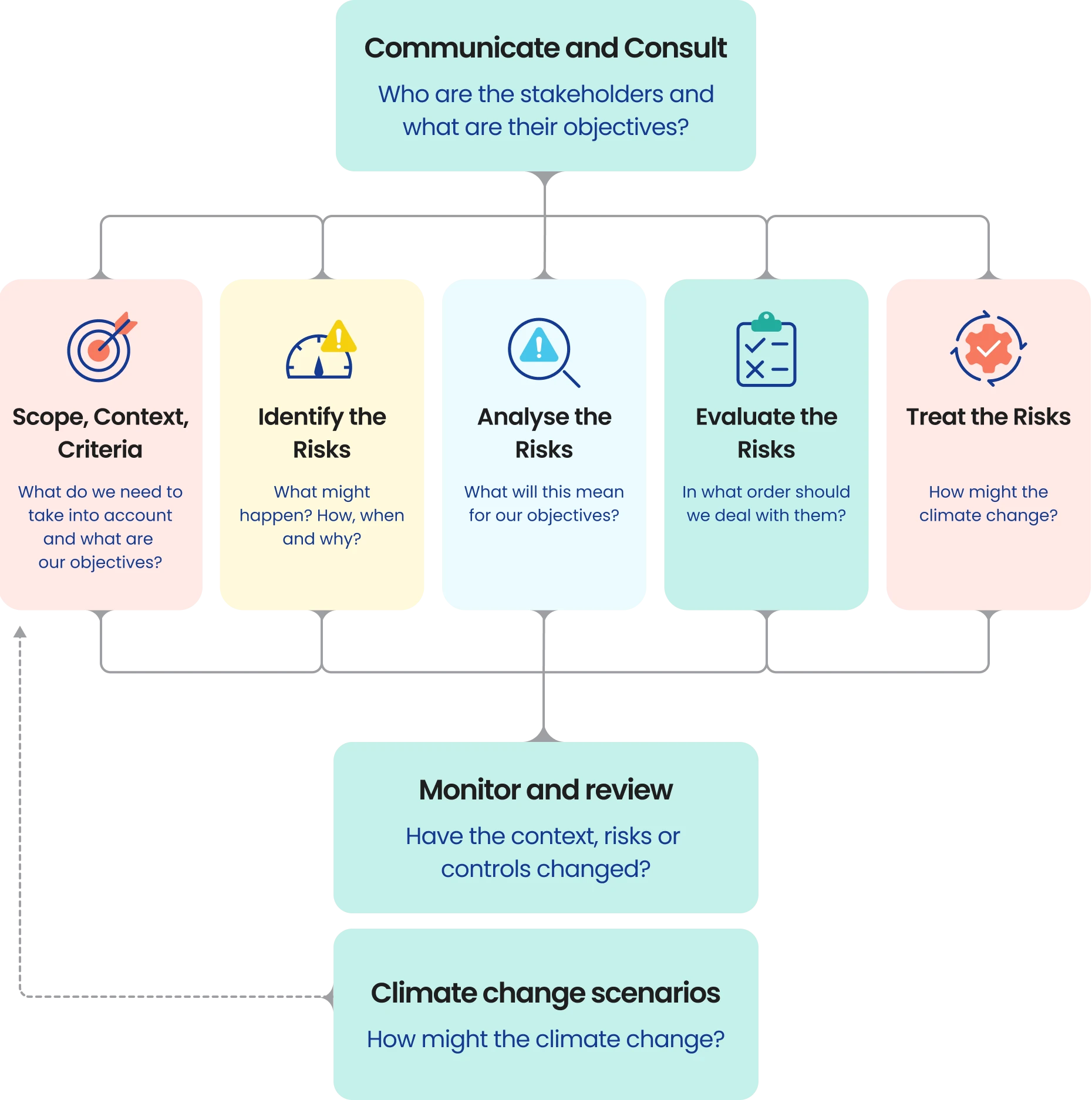Climate Change Strategy
Climate Change Risk Analysis
Purpose and Scope
A review of climate-related risks of Mega Lifesciences having developed frameworks for governance, risk management and corporate social responsibility (CSG).
It outlines how the focus on medium- and long-term effects of climate change and climate policy, previous risk assessments, and the need to generate an understanding of climate-related uncertainties to support strategic decisions. It is important, in the context of climate change, to address not only the immediate future, the scope of most risk assessments, but also to include explicit attention to intermediate and long-term concerns. This required some adjustments to the company’s ERM assessment framework.

Mega Lifesciences manufactures a wide range of medicinal supplements, pharmaceutical products and also procures finished products from third party manufacturers. Hence, the Company has a need for a wider understanding of the Climate change risks associated with its developed/ complex supply chain.
The company wishes to develop a comprehensive strategy for dealing with climate change and its effects, encompassing:
The risk assessment followed the guidelines issued by the Australian Greenhouse Office (AGO, 2006), Climate Change Impacts and Risk Management – A Guide for Business and Government.
This approach is aligned with the international standard ISO 31000, Risk management – Guidelines, with the explicit addition of relevant climate change scenarios to the ‘scope, context and criteria’ step.
Coverage and Materials
Coverage
- The regions in which the company’s manufacturing plants, packaging facilities and warehouses were located.
- Regions where important production inputs were sourced or where the company’s supply chains might be vulnerable.
- Jurisdictions where changes in climate policies might influence the company.
Materials
- A wide range of detailed company documents describing its operations and supply chains.
- Reports on climate science, climate regulations and policy, and a set of relevant climate scenarios.
- The company’s risk management framework and processes, as well as guidance on understanding climate-related uncertainty.
Stakeholders
Stakeholders had been considered in detail as part of earlier strategic planning activities. This analysis was reviewed and extended, taking account of the climate-related context of interest here.
Two sets of questions were used to guide the discussion:
- Who might be affected indirectly if the company is affected by climate change, and how? (See, for example, Table 1)
- Who might be affected directly by climate change, and how might this impinge upon the company? (See, for example, Table 2).
This helped to identify:
- Potential new concerns of stakeholders who had been identified previously
- Previously unidentified parties with an interest in climate change and the company’s responses to it.
| Stakeholder | Climate effect on company | Effect on stakeholder |
|---|---|---|
| Supplier | Requirement for additional utilities, particularly energy and water | Increased demand on supply networks |
| Regulator | Changes in waste streams or emissions from manufacturing | Social and political pressure to revise regulations |
| Customer | Restrictions on ability to manufacture or distribute required volumes of products | Adverse health outcomes |
Table 1: Examples – company effects on stakeholders
| Stakeholder | Climate effect on company | Effect on company |
|---|---|---|
| Supplier | Inability to harvest, prepare, supply or transport an important ingredient to the required quality or quantity | Restrictions on manufacturing; need to adapt supply chains |
| Regulator | Changes to policy requiring additional adaptive actions | Constraints on operations, sites and supply chains |
| Regulator | Changes to policies that affect energy, water, GHG emissions or waste | Constraints on operations; changes to plant engineering |
| Customer | Variations in disease patterns as disease vectors adjust to changes in climate | Change in demand and product mix |
Table 2: Examples – stakeholder effects on the company
| Stakeholder | Climate effect on company | Effect on company |
|---|---|---|
| Supplier | Inability to harvest, prepare, supply or transport an important ingredient to the required quality or quantity | Restrictions on manufacturing; need to adapt supply chains |
| Regulator | Changes to policy requiring additional adaptive actions | Constraints on operations, sites and supply chains |
| Regulator | Changes to policies that affect energy, water, GHG emissions or waste | Constraints on operations; changes to plant engineering |
| Customer | Variations in disease patterns as disease vectors adjust to changes in climate | Change in demand and product mix |
Outcomes
The direct effects of climate change on the company’s business appeared to be minor in the short to medium term. They were largely confined to modest increases in the costs of some biological inputs, energy and water, resulting from climate change either increasing producer costs or placing pressure on traditional sources of supply.
Significant regulatory constraints on greenhouse gas emissions did not apply to the company at the time, although they could be applied in the medium term with subsequent reductions of emission thresholds. Indirect effects of other related policy changes were likely to result in modest increases in the costs of energy in the short term. In addition, social pressures and increasingly stringent waste disposal regulations could impose additional costs on the business and could potentially harm the company’s reputation.
While it was not felt they presented significant risks in the next few years, a few areas were identified where further examination would be prudent. These included:
- The potential magnitude of input cost increases or restrictions on water and solid waste disposal
- The cost of consumables for collecting biological inputs
- The potential impacts of climate change on the habitat and availability of specific biological input products
- Opportunities to exploit off-peak power and alternative power sources
- Assurance that regulations would treat joint venture operators as separate entities for reporting and emissions control
Strategy
- Monitoring the input costs including energy, waste, labor, and raw materials.
- Diversifying the supply chain
- Joint ventures/third party procurement
- Supply chain interdependencies
- Waste management
- Awareness of sustainable business practices for green financing
- Training and development of internal resources
- Audits and reporting for optimal practices






